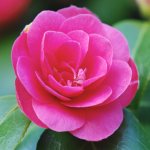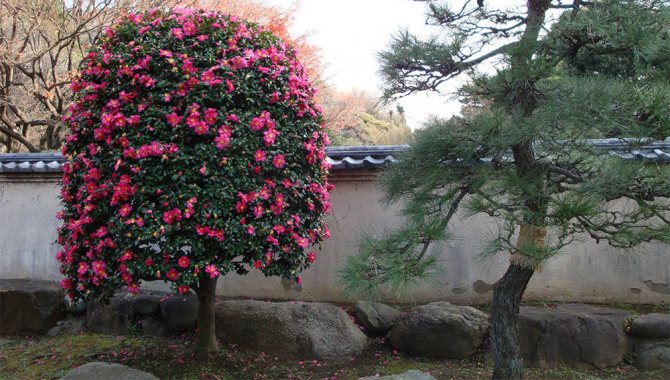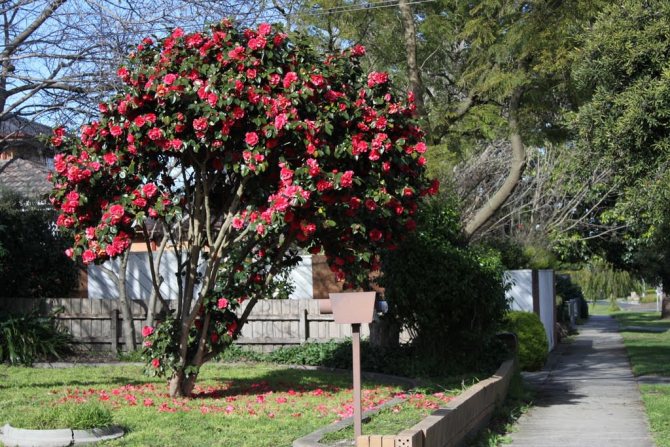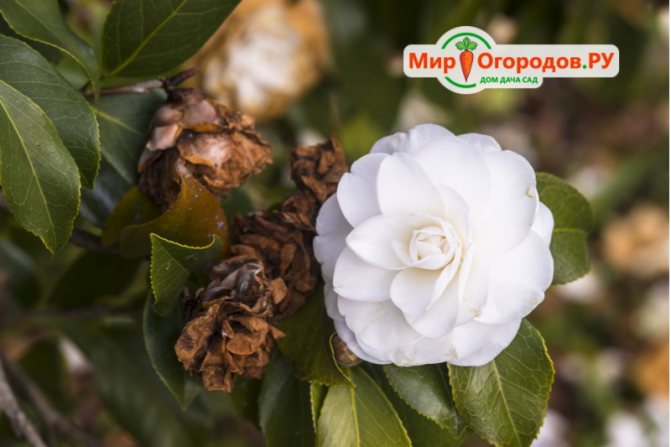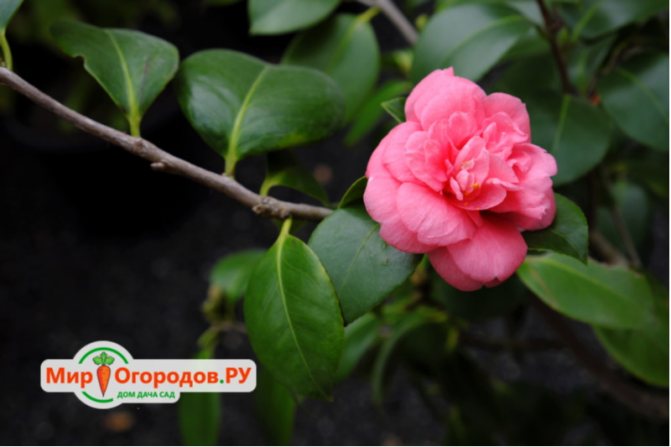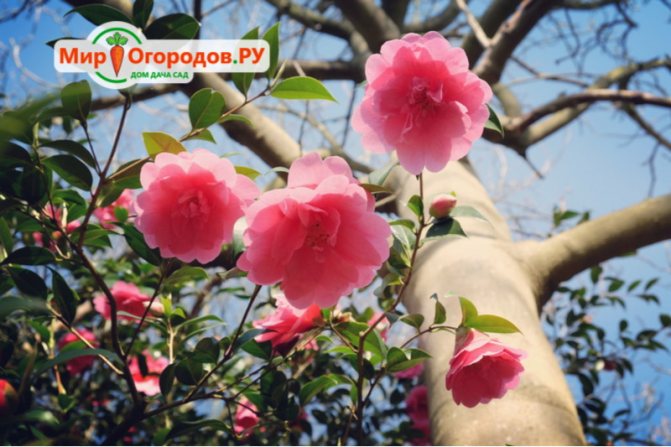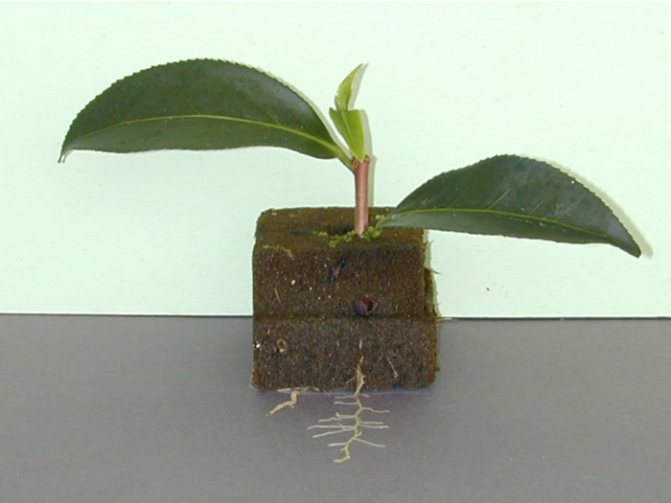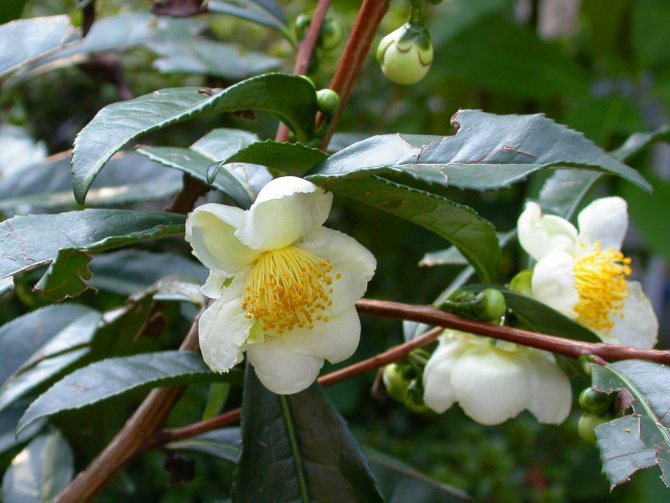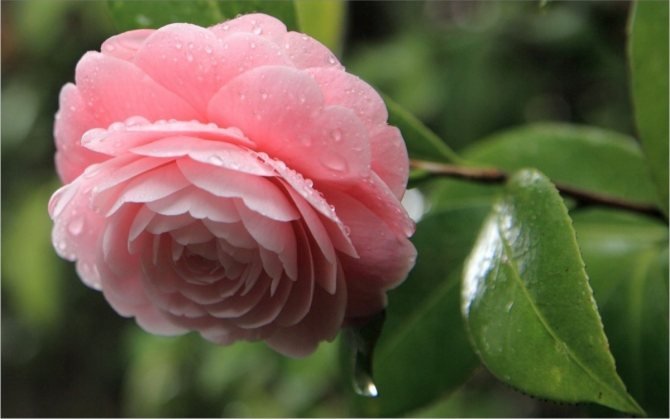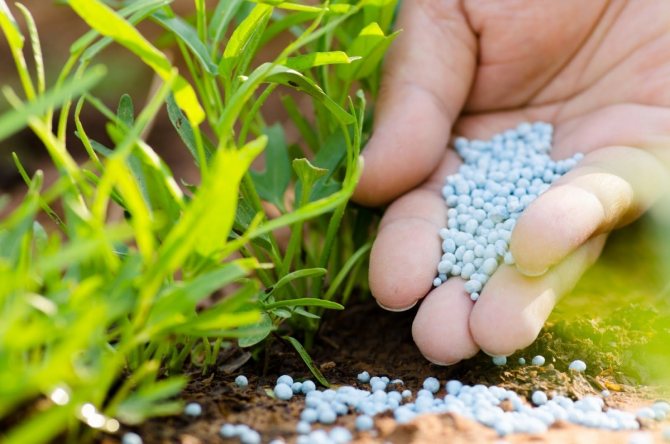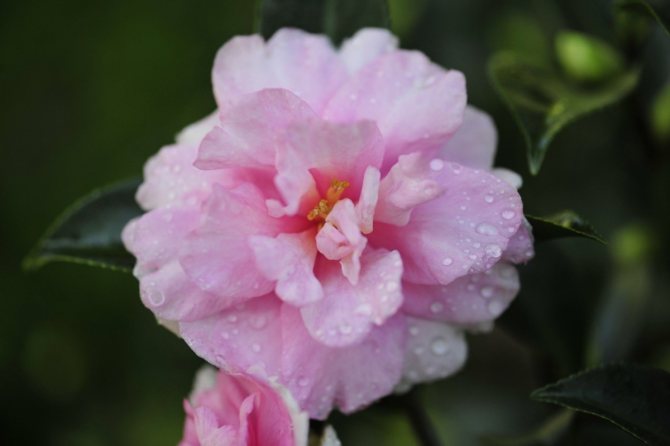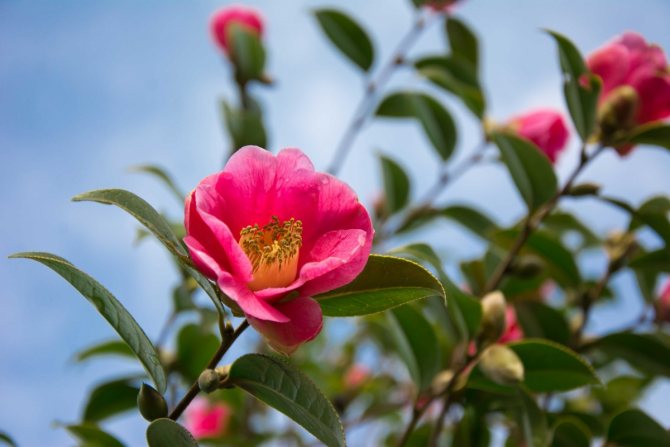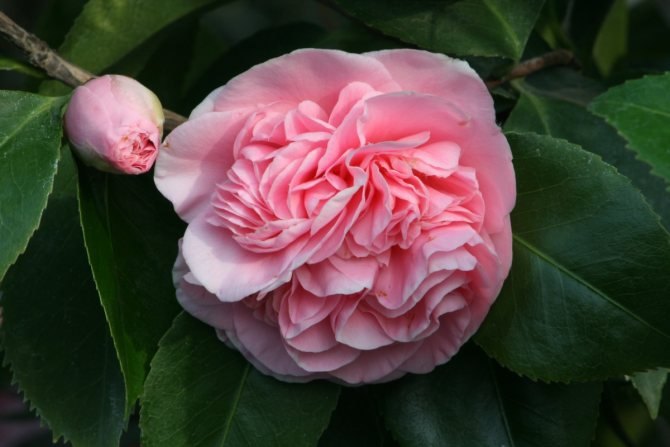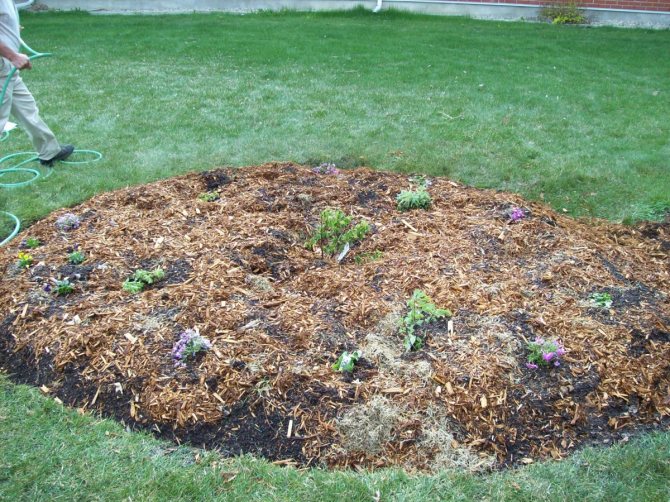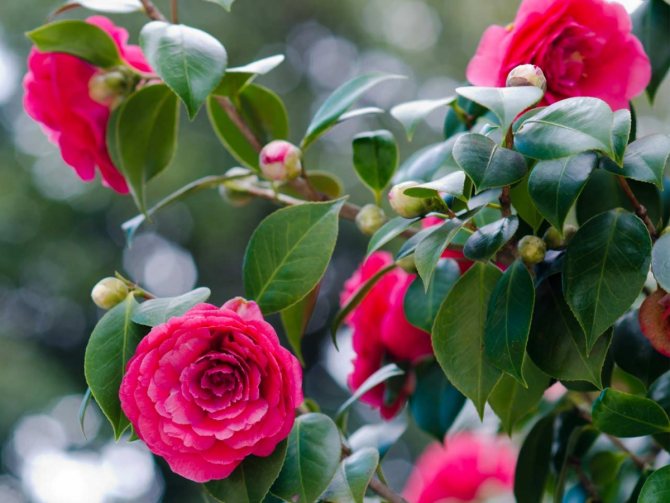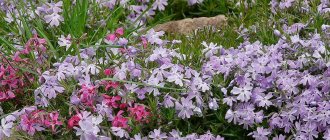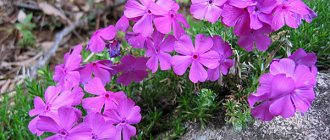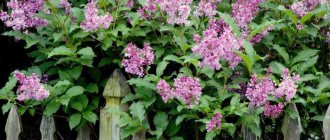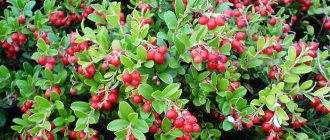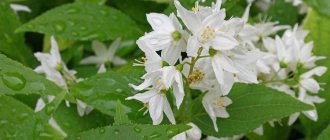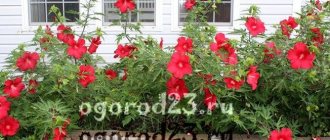Many people are familiar with a beautifully flowering houseplant that resembles a rose. But unlike a rose, it has no thorns, and the leaves are shiny, glossy. It's about camellia. The plant, which grows in countries with a tropical climate, has taken its rightful place on the windowsills of our apartments and is very popular. In this article you will find useful information on growing camellia care at home.
Evergreen camellia: description
The genus camellia of the tea family has up to 80 varieties, which are evergreen shrubs or trees. The decoration of the shrub is the leaves - glossy, leathery oval, pointed single or accrete at the base, as well as flowers of all shades of white-pink-lilac. Many species are widespread due to their high decorative qualities. Garden camellia blooms in winter, when the thermometer does not exceed 12 ° C. The duration of flowering of the shrub is also surprising. It is from 1 to 3 months. Each flower is capable of not fading for about a month. On this amazing shrub, flowers appear in the winter at the ends of the shoots. The blooming garden camellia, the photo of which is presented, is a festive and solemn sight. She is able to radically change any, even the most dull and unpromising area. That is why, among landscape designers, camellia is on a high pedestal. These magnificent shrubs are invaluable in landscaping interiors, creating park and garden compositions. The most interesting object in creating landscape masterpieces is the Japanese garden camellia - an evergreen tree or shrub that reaches 10-15 m in height, common in the subtropical forests of Japan and China. A distinctive feature of the Japanese camellia is the presence of large red single flowers located in the axils and at the tops of the branches. Flowering is spectacular and long lasting. In culture, there are up to 1000 different garden forms and varieties with a wide variety of double and semi-double flowers with a diameter of 4 to 15 cm. Japanese camellia is photophilous, but it also tolerates slight shading.
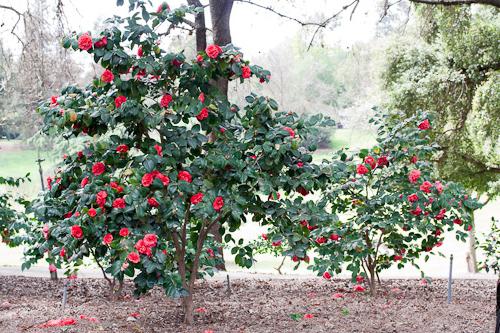
Frost-resistant varieties of camellia
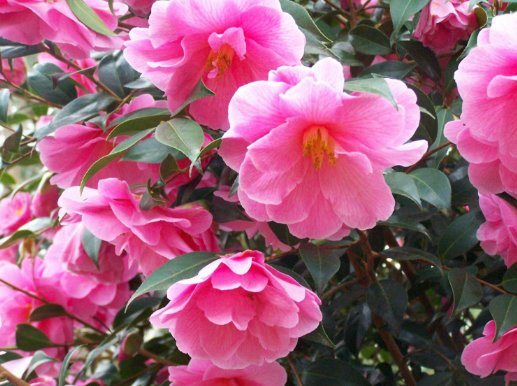

Today, among the many cultivated varieties of camellias, there are also varieties that are adapted to winter cold. They can be grown in open soil even in areas where winters are very harsh.
Only for success to be justified, you, as a gardener, will need to carefully select growing conditions and provide careful care for the camellia. And then the beauty of the blooming camellia will pay off a hundredfold all the efforts made.
Camellia as a species combines many varieties with a wide variety of forms: from small shrubs to huge trees.
But frost-resistant varieties of camellia have been bred for hundreds of years, and only in the 21st century seedlings of crops that can grow in open soil even in frosty winters began to spread massively. The following are the best frost-resistant camellia varieties:
- "Donation";
- Debbie;
- "Hagoromo";
- Freedom Bell;
- General Colletti
All of them begin to bloom in the spring and retain their foliage even in winter.
Camellia varieties Donation - seemingly fragile and delicate purple-pink ornamental shrub. The rounded flower petals vaguely resemble an orchid.The flower is 10 cm in diameter.
This variety is very slow-growing, forgives small care errors and is suitable even for beginner gardeners or those who have no experience in growing camellias. The lush dark green crown only emphasizes the luxurious scattering of large bright flowers.
Camellia varieties Debbie also has purple-pink flowers, only more saturated colors. Unlike the previous variety, Debbie grows quickly, and her abundance of flowering does not suffer at all.
Its flowers are smaller and more double, and the petals are rounded, but in general, these two varieties are very similar. Debbie is not afraid of precipitation or late snow, she does not require complex care and is very well suited for acquaintance with the world of camellias.
Japanese camellia varieties Hagoromo blooms with pearl-pink buds with tints. But the flowers are actually chameleons. With further blooming, they turn white.
It is a slender ornamental shrub with elongated branches and a dense crown. Camellia grows slowly and mostly upward, slightly adding to the diameter of the crown.
Camellia flowers Freedom bell have a red color with a slight coral shimmer and a silky texture. This is a real work of art among plants, decorated with bright stamens.
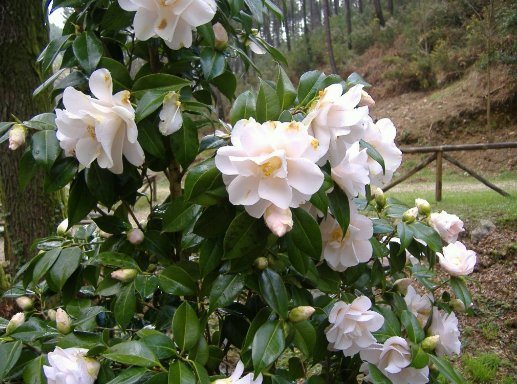

Branching Freedom Bell is very dense, straight growth and large, beautiful glossy leaves. This variety tolerates pruning well. In case of deformation and freezing of shoots, they can be shortened without fear.
Japanese camellia General Colletti strikingly differs from the previous variety with its bright and variegated red flowers. White and scarlet spots stand out interestingly on them. White stains on the petals increase as the buds bloom.
Did you know? To date, more than 10,000 species and varieties of camellias are known.
Garden camellia: planting and care
The easiest way to propagate camellia is by seed. Usually freshly harvested seeds are sown, the germination rate of which is 80-90%. They are not stored, as they rapidly lose their ability to germinate. The ideal soil for sowing is a mixture of river sand and peat in equal proportions. To accelerate seed germination, the air in the room where the seedlings are grown is warmed up to + 22 ° C. Seedlings germinate and take root throughout the year. It should be remembered that the young seedlings obtained are distinguished by a low level of resistance to adverse influences, however, with high-quality care, they develop intensively, increasing the degree of winter hardiness, which the garden camellia differs. Care and cultivation ends with flowering, which usually occurs in the fifth or seventh year, sometimes after 2-3 years.


Propagation by cuttings
For propagation of varietal camellias, the vegetative method is more suitable - with apical cuttings, for which shoots of the current year with two or three internodes with developed axillary and apical buds are chosen. The sizes of cuttings are purely individual, ranging from 3 to 12 cm and depend on the variety of camellia. They are cut in July or August. From the bottom of the cutting under the axillary bud, the most oblique cut is made, the bottom sheet is also cut off. To increase the likelihood of rooting, the cuttings are placed in a solution of stimulants for 5 - 7 hours and planted in clean river sand, covered with glass or film. An important condition for rooting is maintaining a constant temperature in the region of 23-27 ° C. Rooting takes a long time - up to one and a half to two months. Treatment with a stimulant significantly increases the rooting rate and forms a powerful root system of the plant.


Preparing the soil for planting in a permanent place
Garden camellia is a lover of acidic soils. Fertile and permeable soils are especially suitable for planting this shrub.When planting, it is important to remember: the camellia should not be buried too deep, its root collar should be flush with the ground. Once a year, the shrub needs feeding. Organic matter is considered the best fertilizer for camellia. At the end of summer, when the plant begins to form buds for flowering next year, the camellia is fertilized with humus, chicken droppings. There is no need to feed the shrub later, as the buds may fall off. A necessary condition for the good development of a plant is mulching with leaf humus, grass, crushed bark or chips, that is, everything that ensures the preservation of soil acidity and moisture at the roots. When mulching, it is necessary to leave the root collar open, as otherwise the camellia can rot.
Transfer
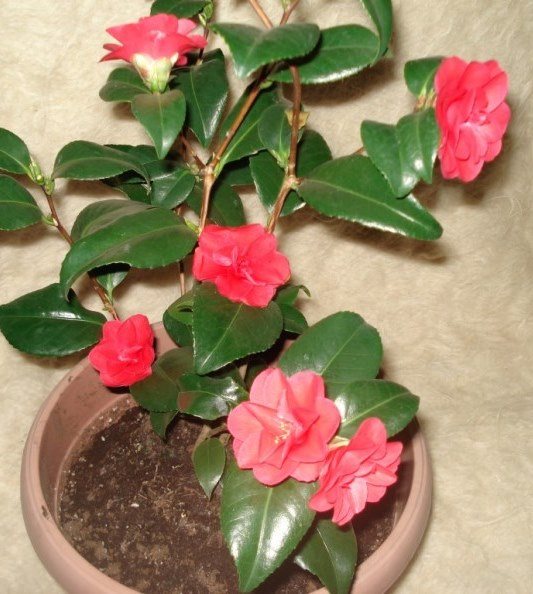

Camellia is transplanted not in February-March, like other indoor flowers, but in late autumn or winter. She begins a dormant period that coincides with flowering. Therefore, you can transplant a flowering plant, observing accuracy. Young plants need replanting every year. Large bushes can be transplanted using the transshipment method once every two to three years, when the roots fill the entire volume of the pot.
In preparation for transplanting (planting), it is necessary to prepare a wide pot, on the bottom of which a layer of drainage is poured. The land can be bought ready for azaleas, camellias. Since different manufacturers allow deviations in the composition, when buying a ready-made earthen mixture, you should pay attention to the presence of the following components in the soil:
- peat;
- sand;
- leafy land;
- vermiculite.
You can prepare the mixture yourself by mixing peat, sand, leafy and coniferous soil. All ingredients are taken in equal parts, and the sand is half as much. The soil should be loose so as not to allow stagnant water. The acidity of the soil should be in the range of 4.0-5.5 units. To increase its permeability, it is recommended to add ground coniferous bark. Pieces of it are usually sold for planting orchids.
This may be interesting: Why anthurium (male happiness) does not bloom
When transplanting a flower, you should pay special attention to the root collar, which should not be covered with soil, but be at ground level. When transferring an adult plant, a fresh mixture is added to a larger pot. If it is necessary to increase the acidity of the soil, mulch it from above with sawdust or small pieces of bark.
Watering
Good development, which is a consequence of proper cultivation, will be appreciated by the garden camellia. Planting and care, as well as competent watering, contribute to the rapid growth of the plant. Regular watering should be provided in all seasons. In the summer they water more generously, taking into account the weather conditions and the landing site. If the summer is hot and dry, it is necessary to spray the bush. In cooler winters, watering is more careful and infrequent.
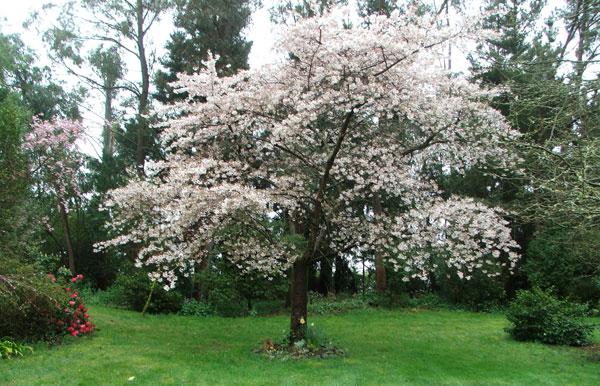

Camellia care
Camellias thrive in humid and temperate climates. They are quite winter-hardy and can withstand frosts down to -20 ° C, prefer shade, and in areas with dry hot summers - a shady location. Camellias are especially fond of being located next to a fence, wall or other higher culture, that is, a support that protects from the winds and the bright sun. The flowering time of the plant is unusual: autumn - winter - early spring. These are the biological features of this genus: for the formation of high-quality buds and flowering shrubs, a short daylight hours and coolness are required. Comfortable air temperature for setting flower buds is 18-20 ° C, for flowering - 8-12 ° C. Camellias love diffused light, but not direct bright sunlight. Blooming representatives of the tea family are not afraid of night frosts, but when the flowers quickly thaw in the morning sun, they lose their appearance and die. Therefore, camellias are usually not planted on the eastern slopes.
Growing flowers
When cultivating a shrub, it is necessary pay special attention to its root system... Flowers have weak roots, which should not be exposed to severe frosts, as the shrub may die. Also, the root system of a garden camellia can suffer from over or under watering.
In some articles on growing a plant, you can find a very contradictory recommendation: the soil should be well moistened and drained. To achieve this soil, it is necessary to apply a large amount of organic fertilizers, adding sand or small pebbles to ensure good drainage.
The video shows tips for growing garden camellia.
Land for the Camellia rose
The preferred soil for shrubs is acidic soil.... Therefore, when feeding, it is necessary to use fertilizers for plants that prefer increased acidity. The process of fertilizing with fertilizers falls on the period of the end of flowering, after winter, when new shoots appear.
Flowers should be purchased during their flowering, as well as when planting irgi, about the cultivation of which read here l. Although this rule may seem strange, since when buying other flowering plants, flowers are plucked and nutrients are spent on building up a massive rhizome system. As an evergreen, leafy shrub, flowers rest during the flowering period.
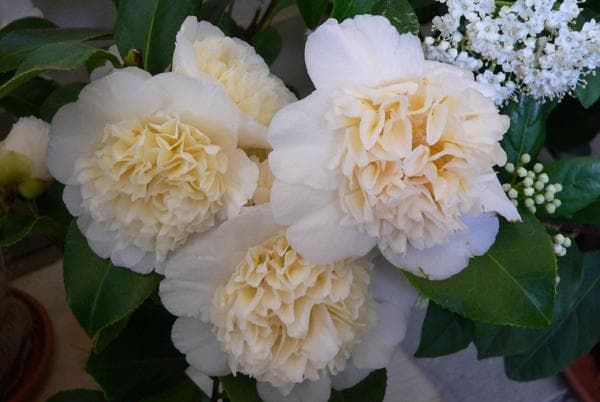

White camellia flowers
Landing in open ground
When planting a shrub on open ground, it is necessary to mulch it.... And when feeding, fertilizers should be applied to the moistened soil. In this case, the place of planting does not matter: in a container or on a site, the flower should first be moistened and then fertilized.
Camellia grows well in pots in colder regions. During the summer season, the pots are taken outside, as the plant needs warmth and sunlight, which should be diffused, not direct. A couple of hours in the open sun will not harm the plant. Flowers should not be planted in the shade or in areas with bright sun.
In the summer, the flowers are kept in pots outside, and in the winter they are brought into the house. During this period, difficulties in growing begin. Since the plant is not indoor, it cannot survive in a home with a central heating system. Flowers need to create conditions similar to a cold greenhouse. A cool balcony is fine for these functions. During the flowering of camellia in winter, temperature regime at night should be from 0˚ to + 5˚C... Keeping the air temperature cool will make the flowers feel great.
As for pruning branches, it should be carried out for prophylaxis on a young plant. Thus, the shape of the bush will be maintained. Pruning is done at the end of the flowering process. It will be better for the bush. For the further development of the plant, pruning of branches should be carried out along the bud.
When you follow these recommendations, how to properly grow a garden camellia, a beautiful flower will delight you for a very long time with its elegant and colorful flowers.
Pruning
Form the crown of the camellia in the spring, pinching the tops of the shoots. This is done in order for the garden camellia to branch better. Planting and caring for bushes is not a complicated operation. In late autumn, shoot pruning is required to stimulate axillary bud growth. Repeating this operation annually, you can achieve excellent decorative effect and flowering of the bush.


Conditions of detention
To keep camellia at home, you need to comply with the requirements for each season, since the health of the plant greatly depends on this. Even a small deviation from the norm can provoke the onset of the disease and the subsequent wilting of the camellia.
Table: Conditions for keeping camellia at different times of the year
| Winter | Spring | Summer | Fall | |
| Temperature | + (5-10) ° C | The optimum temperature for maintaining the vital functions of camellia is from +15 to + 35 ° C. At a lower state, the flower enters a state of dormancy, at a higher state, it enters a state of stagnation (in contrast to a state of dormancy, this state brings harm to the plant). | ||
| Humidity | Camellias prefer high air humidity - up to 90%, but in summer this figure can be slightly reduced. Most varieties tolerate the rate of 75 - 80% and even lower without loss. | |||
| Lighting | Diffuse light / partial shade | Until 10 and after 18 hours, the camellia is kept in the light, and at noon it is removed to a shaded room. Interestingly, varieties with white and light pink flowers need to be kept more in the shade than all others. | Diffuse light / partial shade | |
Recently, the so-called florariums have become very popular - compositions from home plants placed in a glass container, starting from a decorative glass and pumping them with an aquarium. There is also a floor version that can reach a height of up to two meters. Florariums are divided into indoor and outdoor, the former of which are good for tropical plants that love high humidity, and the latter for succulents that prefer a dry atmosphere.
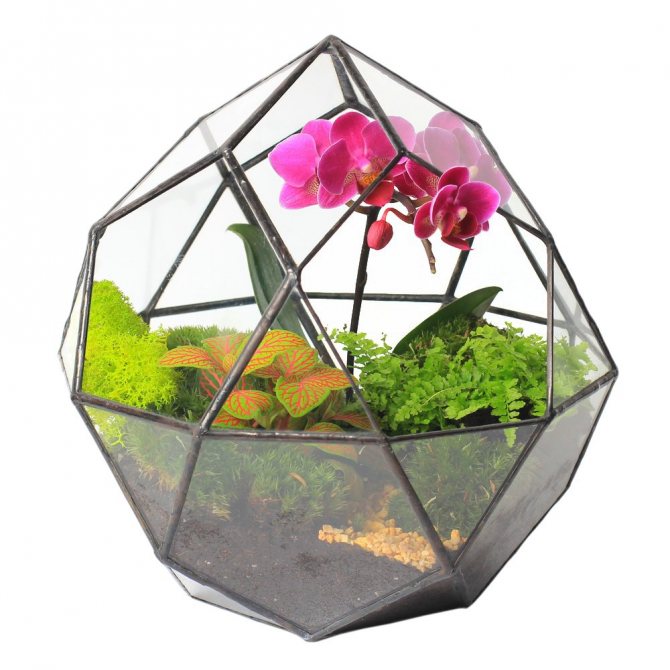

Camellia is difficult to attribute to the flowers recommended for growing in the florarium - it did not come out in size, and caring for it is much more difficult than for many other flowers
Of course, many people have a question - how well is camellia suitable for a florarium? A clear and unambiguous answer to this question is difficult to formulate, but one thing can be said with certainty: camellia is an unobvious option for a florarium, and there are reasons for this. Firstly, the domesticated camellia, although not like its forest and mountain counterparts in terms of size, still has rather large dimensions, and only a very large aquarium or a special glass box can accommodate it, which requires a lot of space and financial costs. Secondly, camellia has its own specifics, which is expressed in the fact that it is not possible to constantly keep high humidity far from all year round. Camellia, although it does not like drafts, needs an influx of fresh air, and during a period of stagnant humidity it can quickly get sick. In addition, you will have to regularly monitor the state of soil moisture - at a time when the flower grows buds and begins to bloom, the soil needs to be kept moist at a constant level. But during the growing season, the soil can be dried between waterings.
The conclusion is obvious: it is much easier and more efficient to grow camellia as an independent plant in a pot. And not every pot is suitable: the best options are oak tubs or unglazed ceramic pots. Both must be large. In such a container, you can quickly move the camellia from light to partial shade when necessary. And to maintain the desired humidity, you can purchase an air humidifier.
Video: Camellia - care and features
Pests and diseases
Unfortunately, pests and diseases do not bypass camellias. It is often attacked by fungi, aphids and worms. Fungal diseases are manifested by the appearance of gray and black spots on the leaves and brown spots on the flowers. A diseased plant cannot be restored, so it is better to remove and burn it.
Insect pests feed on plant juices, causing it to rot. To get rid of parasites, you should wipe the affected leaves and stems with an alcohol solution with further treatment of the camellia with insecticides.
The garden camellia, amazing in beauty and duration of flowering, gives incredible joy. Planting and caring for this culture is not as burdensome as they write in many publications, but it is impossible to contain emotions, looking at the regal decoration of a magnificent tree.

